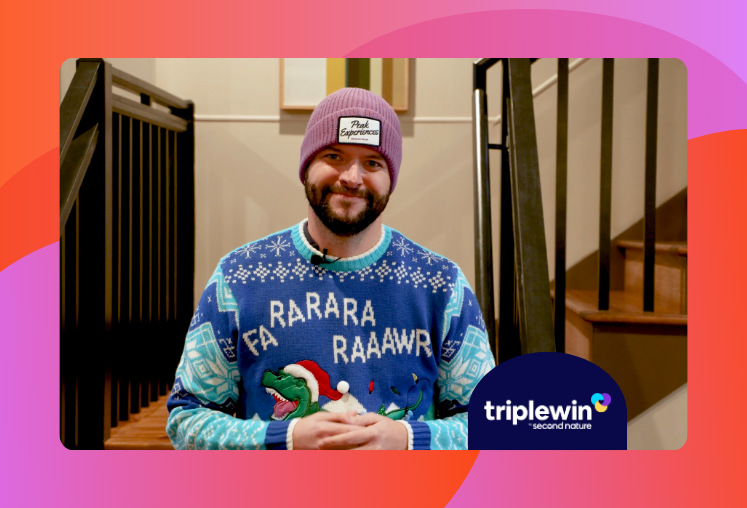Defining the KPIs you want to track as a property manager is one thing, but ensuring that you’re consistently getting useful information and insights from those KPIs is another. KPI management is an important process that is often not given enough effort, and the result is incomplete data or metrics that don’t do a great job actually showing you what you want to know about your company.
KPI Management comes with two key parts.
- Ensuring you’re using the right KPIs
- Ensuring the data is comprehensive and accurate
There are no steadfast rules for what property management KPIs you should and shouldn’t track. As long as you understand what you’re trying to measure, you’re committed to continuous improvement, and you don’t overload your KPI sheet, you’re on the right track.
"So I have gone across the bridge that maybe many of you have of having a spreadsheet with 400 KPIs, and it was crushing us," says Tim Wehner, Marketing Coordinator at Dodson Companies and property management veteran. "I blew up that bridge, Don't cross that again, right. I like five, especially for the property managers. You just say, hey, there's just five numbers I'm going to track. It's like the power five KPIs."
Obviously, there will be different KPIs at different levels of the organization, but Wehner’s power five KPIs for his property managers are:
- Tenant vacancy rate
- Owner delinquency rate
- Available unit rate
- Percentage of units in turn
- Percentage of PMR collected
But while what he is measuring may be valuable to you, his bigger point here is that managing the quantity of your KPIs is important in order to maintain focus and clarity in the data. These aren’t set in stone. If you find that your set of KPIs isn’t giving you the information you want, you can always adjust. Many companies conduct quarterly reviews of what they’re actually measuring to ensure the effort they put into tracking is ultimately fruitful.
"We review our KPIs, not the numbers, we do review the numbers, but the actual type of KPI, we review that every quarter to see is this number still relevant? Or do we want to replace it with something else?" says Julie Mullinax, Owner of CRM Properties. "So that would be one thing that I would say, don't feel like, if you have these five KPIs for your property managers, you have to keep those five KPIs for your property managers for the next 10 years. I think we've really changed ours as we see a number got better. "
Ensuring that KPIs are useful to the people using them helps heighten awareness of the importance and current state of those metrics. That team buy-in is critical.
“One of the things that's really important about KPIs is this idea of trash and trash out,” says BetterWho CEO Matthew Tringali, the idea being that if you put trash effort into your KPI structure, you’re not going to get helpful insights as the output.
“We all have this idea of like, oh, yeah, I agree with these beautiful KPIs. And you know, I want my software to produce this beautiful report, this beautiful number," continues Tringali. "The reality is, most or all of your software can do that stuff, but it's only going to be as good as your team is at actually putting in the numbers. So if you don't have the right fields, or your team is just, you know, they don't see the value without putting the numbers in, then you can't actually make progress with that.”
Tringali’s point about KPIs is similar to a prevalent point he and many others have made about tech as the PM industry has been inundated with automation systems: If your team, as the people using the process, is not invested and committed to it, it will not work.
The idea of having a simple approach and a manageable number of KPIs for people to keep track of plays directly into this, especially with more action-oriented people like your sales team.
Different property management firms have different approaches to ensure data is valid and entered regularly. Wehner employs a remote team member whose job is explicitly that.
“all of our property management, property managers, all of our staff, our leasing agents, they're all very, very busy,” says Wehner “So you want to make it super easy. And then one of the things that we do is we have actually a remote team member, that we have that that's what their sole focus is, is making sure that our data in our systems is correct.”
Darus Trutna, Founder of Rentor, is a big believer in a process that gets his team to internalize the numbers, the theory being that being in "physical contact" with your most critical metrics on a daily basis prevents overlooking them.
"You just need to type on the keyboard that number, right?" says Trutna. "It has to go from the screen here, in here, I see my delinquency rate, I then have to express that number on people. So I feel that number. And I want the team members to know those numbers, because that's pain for the owner. Right, and for the resident, and for us. And so I've actually moved away from automation."
Reluctance and hesitance comes from this friction to do something right. We've all had some habit we wanted to start, right? But until you make it incredibly easy and put it in front of yourself, so you can't not do it. That's how we operate now. So we have a team dashboard that we've set up, and the team members cannot leave for the day until those data points are entered. And once again, they can ask for help with it. But it's not something that you can not do. And the whole team sees they haven't put their KPIs in there. So the data is really easy to pull, and then you can't get away in a sense, right? It's just there in front of you. It's like putting something on top of your keys before you leave, right you're not going to forget the item because you can't get your keys without touching the KPI."
Wehner ties incentives to team member-specific KPIs in order to promote the importance of tracking.
"What we've done with the team is we have financial incentive payments in their portfolios, so they have a certain percentage they receive every quarter based off the actual revenue of their portfolio. So every Tuesday we have our weekly huddle and the five or six property managers, they have their KPI report, their delinquency rate, vacancy rate, and turnover numbers. The discussion is that the lower the delinquency rate, a higher the bonus, the lower the vacancy rate, the higher the bonus, etc."
Savvy property managers understand the importance of a system of KPIs that produce consistent, actionable insights. If you're finding that you have KPIs, but you're struggling to pull useful information from them, consider some of the tactics above to create something that's of a more beneficial nature to your business.
Consider a Residents Benefits Package (RBP) when thinking about your KPIs. Providing residents with the amenities and support they want will go a long way in creating a better experience that will keep them and increase their likelihood of renewing their leases.



